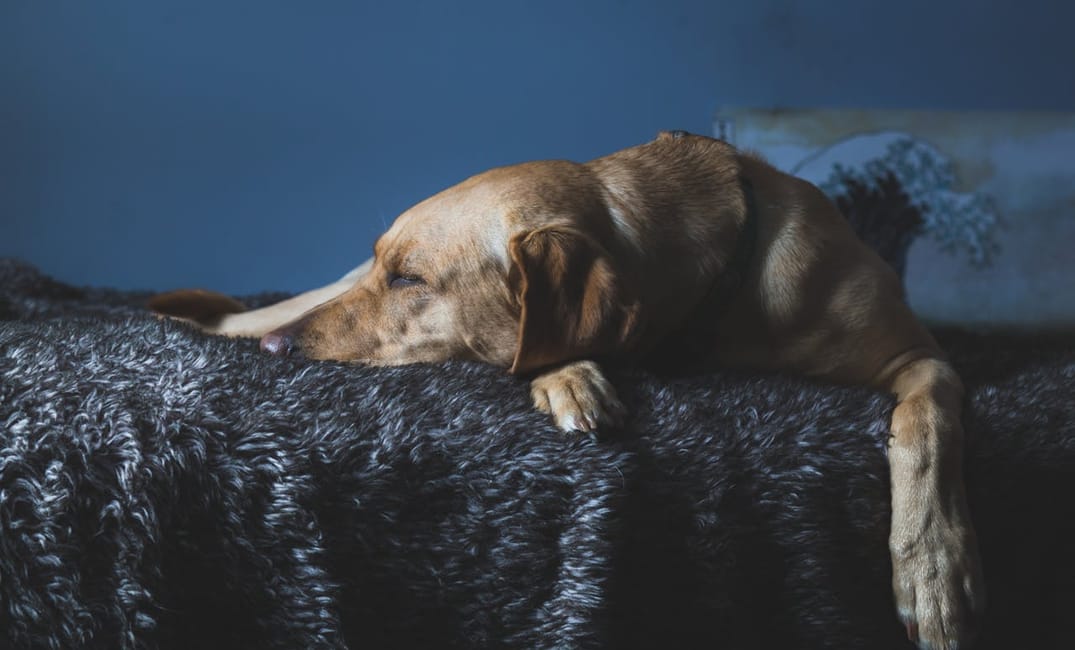Table of Contents
Aging changes a lot for our dogs, how they move, how they see, and how they get around the house. What once was a playful leap onto the couch might now be a clumsy stumble. If your dog is entering their golden years, making small changes at home can go a long way in helping them stay safe and comfortable.
Here are 13 simple adjustments you can make to give your senior dog the care and dignity they deserve.
1. Add Non-Slip Rugs or Mats
Hardwood or tile floors can be slippery for older dogs who have less muscle control and joint strength. Place non-slip rugs or yoga mats in high-traffic areas to help them keep their footing and reduce the risk of injury.
2. Use Baby Gates to Block Stairs
Stairs become risky when joints stiffen and eyesight dims. If your dog is prone to falling or has trouble with steps, block off stairways using baby gates. Keep them confined to one safe level of the house when you’re not around to assist.
3. Invest in Ramps or Pet Stairs
Jumping onto beds or couches can be painful or even dangerous for aging pups. Ramps or pet stairs make it easier for them to reach their favorite spots without putting pressure on their joints.
4. Raise Their Food and Water Bowls
Bending down too far can strain an older dog’s neck and spine. Elevated bowls make mealtime more comfortable and can help prevent choking or digestive issues.
5. Provide Orthopedic Bedding
Soft, supportive bedding cushions aging joints and encourages better sleep. Choose orthopedic or memory foam beds placed in quiet, draft-free spots they already love.
6. Improve Lighting in Dark Areas
Night vision declines with age, just like it does in humans. Add nightlights in hallways, staircases, or near their bed to help them navigate safely after dark.
7. Create a Quiet Zone
Senior dogs may be more sensitive to noise and stress. Set up a cozy corner where they can retreat from loud guests, children, or other pets when needed.
8. Secure Loose Wires and Clutter
Mobility issues make it easier for dogs to trip over things you might not notice. Keep walkways clear and tuck away wires or low-hanging cords to reduce fall hazards.
9. Keep Their Essentials Close By
Avoid making your dog travel too far for the basics. Keep water, food, and their bed on the main floor to limit unnecessary movement.
10. Trim Foot Fur and Nails Regularly
Overgrown nails and tufts of fur between paw pads can cause slipping or instability. Regular grooming helps maintain grip and balance on indoor surfaces.
11. Monitor Room Temperatures
Older dogs are more sensitive to extreme temperatures. Make sure their favorite resting areas aren’t too hot or cold, and consider using a heated bed or cooling mat as needed.
12. Use Gentle Cleaning Products
Senior dogs may be more sensitive to strong smells and chemicals. Choose pet-safe, fragrance-free cleaners for the floors and surfaces they frequently touch or lick.
13. Install a Camera for Peace of Mind
If you’re away from home, a pet camera can help you keep an eye on your dog and give you the chance to check in and talk to them during the day. It’s not just about safety, it’s about comfort and connection.
Our dogs give us everything, and when they grow older, it’s our turn to give back in small, thoughtful ways. These adjustments don’t need to be expensive or complicated. Just a little intention can help your senior pup move through their days with more ease and security.

